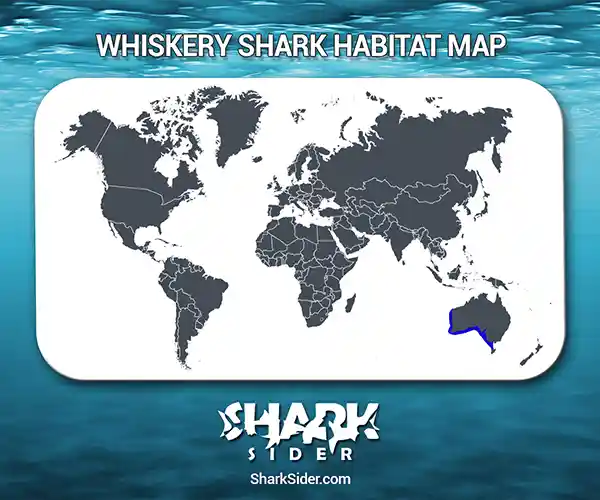The whiskery shark is a species of houndshark living in Australia. It is named after the prominent barbels protruding from its nostrils.
Whiskery Shark Scientific Classification |
|
| Kingdom | Animalia |
| Phylum | Chordata |
| Class | Chondrichthyes |
| Order | Carcharhiniformes |
| Family | Triakidae |
| Genus | Furgaleus |
| Scientific Name | F. macki |
Description
On average, these sharks are 5.2 ft long and weigh 29 lb. They are moderately stout, almost hunchbacked, with a rounded snout, horizontally oval eyes on top of the head, and nostrils with their characteristic barbels and skin flaps over them. The shark’s mouth has a wide arch with long furrows at the corners, inside which are 24–32 angled, knife-like teeth in the upper jaw and 36–42 teeth with a single upright cusp in the lower jaw.
Dorsally these sharks are grey, while ventrally, they are white. When they are younger, they have dark blotches or splotches on their bodies, but these fade away as they grow older.
Where do they live
Map Of The Whiskery Shark’s Habitat

The whiskery shark is endemic to Australia, ranging from the North West Cape in Western Australia to Wynyard in Tasmania. Its population density is highest between Kalbarri and Albany, with a preference for kelp beds and rocky areas and living at a depth of 720 ft.
Behavior
Feeding
Whiskery sharks are specialized predators feeding on octopi exclusively. Analysis of the stomach contents of some captured specimens has uncovered the remains of bony fishes, cephalopods, seagrass, small rock lobsters, and spoonworms.
Reproductive
They are viviparous, with mating taking place from August to September. After gestating for 7-9 months, a litter of 4-28 pups is born in August to October, with larger litters being born in larger females.
At birth, the newborns are 8.7–10.6 inches long. The juveniles reach sexual maturity when they are 3.6–4.3 ft long, approximately when males are five years old and females are seven years old. The maximum lifespan of a whiskery shark is 15 years.
Interactions with humans
Despite being fished commercially for its meat – referred to as “flake” in markets – its population is stable and remains at steady levels. As a result, the IUCN classifies the whiskery shark as “Least Concern” or “LC”.
